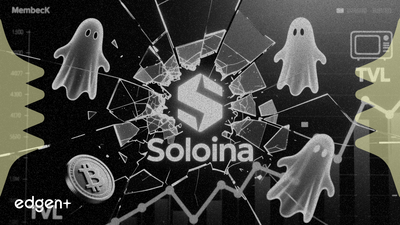 Informe
Informe
No Data Yet

## El evento en detalle **HashKey Group** avanza con los planes para lanzar una Oferta Pública Inicial (IPO) en Hong Kong, posicionándose para convertirse en la primera empresa totalmente cripto-nativa en cotizar en bolsa. La oferta propuesta implicará la cotización de **240,57 millones de acciones**. Esta iniciativa estratégica está diseñada para financiar la expansión de su ecosistema integral de activos digitales, que se extiende mucho más allá de un intercambio de criptomonedas estándar. El modelo de negocio de HashKey se basa en proporcionar una plataforma de servicios financieros integrada y regulada. Sus operaciones abarcan una amplia gama de servicios que incluyen un intercambio al contado con licencia, soluciones de custodia segura, participación institucional, gestión de activos y tokenización de activos del mundo real. Al consolidar estas funciones, HashKey tiene como objetivo servir como una ventanilla única para clientes institucionales y minoristas que navegan por el panorama regulado de los activos digitales. ## Estrategia comercial y posicionamiento en el mercado La estrategia de HashKey se centra en un enfoque de **"cumplimiento primero"**, lo que la distingue de muchas empresas cripto-nativas que históricamente han operado en áreas grises regulatorias. Este posicionamiento se alinea con una tendencia emergente del mercado donde el capital fluye cada vez más hacia plataformas confiables y transparentes. Las importantes entradas netas en intercambios como **HTX**, que prioriza la transparencia de los activos a través de la **Prueba de Reservas (PoR)**, subrayan una demanda en todo el mercado de seguridad y confiabilidad. Esta estrategia refleja los desarrollos en otras jurisdicciones financieras importantes, como la reciente aprobación de estatutos bancarios fiduciarios nacionales para firmas como **Circle**, **Paxos** y **Fidelity Digital Assets** en los Estados Unidos. Si bien esas firmas se están integrando en el sistema bancario de EE. UU., HashKey está aprovechando los mercados de capital público en Hong Kong para lograr un objetivo similar: consolidar su estado como proveedor de infraestructura financiera regulada y de grado institucional. La medida establece un plan potencial para que otras firmas de activos digitales en Asia busquen legitimidad y capital a través de cotizaciones públicas. ## Implicaciones del mercado La IPO de HashKey sirve como un barómetro crucial en tiempo real del apetito de los inversores por la infraestructura cripto compatible. Una oferta exitosa no solo validaría las ambiciones de Hong Kong de convertirse en un centro líder para activos virtuales regulados, sino que también podría abrir un nuevo canal para la formación de capital para la industria en Asia. Representa un cambio de la financiación de capital de riesgo privado a los mercados públicos, lo que indica una nueva fase de madurez para el sector cripto. Por el contrario, una recepción tibia podría indicar que los inversores del mercado público siguen siendo cautelosos, lo que podría ralentizar el movimiento de otras empresas cripto hacia las IPO. El resultado probablemente influirá en las estrategias regulatorias y corporativas en toda la región. ## Comentario de expertos Los analistas de mercado y los expertos legales consideran 2025 como un período formativo para las ofertas públicas relacionadas con criptomonedas. **Laura Katherine Mann**, socia del bufete de abogados **White & Case**, ha declarado que 2025 será un "año de prueba" para dichas IPO. Proyecta que 2026 será el "verdadero año del juicio", cuando el mercado determinará si las empresas de activos digitales son una clase de activos viable a largo plazo. El comentario de Mann sugiere que la próxima ola de empresas que salgan a bolsa probablemente se centrará en la infraestructura financiera, incluidos los intercambios regulados, los custodios y las plataformas de monedas estables, una descripción que se ajusta precisamente al modelo de negocio de HashKey. Sin embargo, también advirtió que el éxito dependerá de valoraciones disciplinadas, condiciones macroeconómicas y las tendencias de precios de los activos cripto. ## Contexto más amplio La IPO de HashKey no existe en un vacío. Es parte de una tendencia global significativa hacia la institucionalización y regulación de la industria cripto. Los reguladores de todo el mundo se están moviendo para establecer marcos claros para los activos digitales, reduciendo la ambigüedad legal que durante mucho tiempo ha obstaculizado la adopción institucional. La luz verde de la **Oficina del Contralor de la Moneda (OCC)** de EE. UU. a las empresas cripto como bancos fiduciarios nacionales es un desarrollo histórico a este respecto, que lleva la custodia y liquidación de activos digitales firmemente dentro del perímetro regulatorio del sistema bancario de EE. UU. Este cambio más amplio proporciona un contexto favorable para la cotización pública de HashKey. Al adoptar la regulación, la empresa se está posicionando para capturar la próxima ola de capital institucional que ingrese al espacio de los activos digitales. Por lo tanto, la IPO no es solo un hito corporativo, sino un evento significativo en la integración continua de las criptomonedas en las finanzas tradicionales.

## Resumen Ejecutivo El mercado de criptomonedas exhibió una volatilidad clásica a corto plazo tras el último recorte de tipos de 25 puntos básicos de la Reserva Federal, un evento que ya había sido en gran medida descontado por los inversores. Bitcoin cayó brevemente por debajo de los 90.000 dólares antes de recuperarse, lo que subraya la sensibilidad del mercado a los cambios de política macroeconómica. Sin embargo, el desarrollo más significativo reside en una serie de aprobaciones regulatorias históricas en EE. UU. La Oficina del Contralor de la Moneda (OCC) otorgó cartas estatutarias condicionales de banco fiduciario nacional a cinco destacadas firmas de criptomonedas, mientras que la Comisión de Bolsa y Valores (SEC) proporcionó una carta de no objeción a la Depository Trust & Clearing Corporation (DTCC) para su programa de tokenización de acciones. Estos eventos marcan un movimiento fundamental hacia la integración de activos digitales dentro del marco bancario y de valores federal tradicional, lo que sugiere un futuro de mayor participación institucional y claridad regulatoria. ## El Evento en Detalle El 10 de diciembre, el Comité Federal de Mercado Abierto anunció una reducción de 25 puntos básicos en la tasa de fondos federales, lo que llevó el rango objetivo a 3.50-3.75%. La reacción del mercado ejemplificó un patrón de "comprar el rumor, vender la noticia". **Bitcoin (BTC)**, que había subido por encima de los 94.000 dólares en anticipación del anuncio, posteriormente cayó a un mínimo de 89.000 dólares antes de recuperarse al nivel de 93.000 dólares. Los analistas consideraron ampliamente este movimiento como una reacción temporal a un evento ya descontado. Otras criptomonedas importantes experimentaron retrocesos más pronunciados, con **Cardano (ADA)** y **Avalanche (AVAX)** cayendo un 6-7%, mientras que **Ethereum (ETH)** cayó un 3%, sin participar en la recuperación inicial de Bitcoin. ## Implicaciones para el Mercado La acción del precio a corto plazo está fuertemente influenciada por las expectativas de los inversores con respecto a la futura política de la Reserva Federal y la liquidez. Los analistas señalan que el compromiso de la Fed de comprar "valores del Tesoro a corto plazo" indica un cambio estructural del endurecimiento cuantitativo. Sin embargo, las implicaciones a largo plazo de las recientes decisiones regulatorias son mucho más profundas. La aprobación condicional de la OCC de las cartas estatutarias de banco fiduciario nacional para firmas como **Ripple**, **Circle** y **BitGo** les permite operar como bancos regulados federalmente, custodiar criptoactivos para instituciones y poner productos como las stablecoins bajo supervisión federal directa. Al mismo tiempo, la carta de no objeción de la SEC a la **DTCC** proporciona una luz verde regulatoria para que la cámara de compensación construya infraestructura que respalde valores tradicionales tokenizados, cerrando la brecha entre Wall Street y la tecnología blockchain. ## Comentario de Expertos Los analistas de mercado han enfatizado que el enfoque ha cambiado del reciente recorte de tasas a la política futura. Katherine Dowling, asesora de **Bitwise Asset Management**, señaló que "todos los ojos están puestos en lo que este movimiento señala para futuras decisiones". Joe DiPasquale, CEO de **BitBull Capital**, afirmó que el rendimiento de Bitcoin depende de "si los mercados compran la historia de un ciclo de flexibilización superficial", lo que crearía un telón de fondo constructivo para activos de alto beta. Gabriel Selby, jefe de investigación de **CF Benchmarks**, destacó la importancia de la liquidez, afirmando que "el endurecimiento cuantitativo ha terminado y la Fed está volviendo a comprar bonos del Tesoro". También señaló el nombramiento del próximo presidente de la Fed como un catalizador crítico próximo que podría alterar significativamente las expectativas del mercado. ## Contexto más Amplio El entorno actual del mercado se define por una dicotomía entre la volatilidad a corto plazo, impulsada por factores macroeconómicos, y una tendencia estructural a largo plazo hacia la integración regulatoria. Si bien el precio de Bitcoin se consolida, se están sentando las bases para la adopción masiva. Las aprobaciones regulatorias otorgadas a las principales empresas de criptomonedas y a la DTCC reducen la ambigüedad y proporcionan un camino claro para que el capital institucional ingrese al mercado. Esta tendencia se complementa con la innovación continua del ecosistema, como el lanzamiento por parte de **Hex Trust** de un token XRP envuelto (**wXRP**) para expandir la utilidad de DeFi y la integración por parte de **YouTube** de la stablecoin **PYUSD de PayPal** para los pagos a creadores. Estos desarrollos paralelos —claridad regulatoria y madurez del ecosistema— están allanando el camino para un sistema financiero más integrado donde los activos tokenizados y los servicios bancarios de criptomonedas se conviertan en estándar.

## Resumen Ejecutivo Está surgiendo un conflicto significativo entre los actores financieros tradicionales y el sector de las finanzas descentralizadas (DeFi) sobre el futuro de la regulación. **Citadel Securities**, un creador de mercado global, ha comunicado formalmente a la Comisión de Bolsa y Valores de EE. UU. (SEC) que los protocolos DeFi que gestionan valores tokenizados necesitan una supervisión regulatoria más estricta. Este movimiento ha sido recibido con una firme oposición por parte de la industria de DeFi, que describe los argumentos como infundados, creando un momento crucial de incertidumbre que podría dar forma al panorama legal y operativo de los activos digitales. ## El Evento en Detalle En correspondencia oficial con la SEC, **Citadel Securities** articuló su posición de que cuando las plataformas DeFi se involucren con instrumentos financieros equivalentes a valores, deberían estar sujetas a los mismos estándares regulatorios robustos que las entidades financieras tradicionales. La advertencia de la firma implica que los marcos existentes son insuficientes para gestionar los riesgos asociados con estas tecnologías nacientes. En respuesta, los representantes y defensores del ecosistema DeFi han montado una defensa, calificando públicamente las afirmaciones de Citadel como "infundadas". Su contraargumento se centra en la opinión de que la naturaleza única y descentralizada de estos protocolos justifica un enfoque regulatorio diferente, y que la imposición de reglas heredadas podría sofocar la innovación. ## Implicaciones de Mercado El debate introduce un elemento considerable de riesgo regulatorio en el mercado de DeFi. Si la SEC adoptara una posición alineada con **Citadel Securities**, podría conducir a mayores costos de cumplimiento y obstáculos operativos para los protocolos DeFi. Esto podría ralentizar el ritmo de la innovación y potencialmente consolidar el poder de mercado en manos de firmas más grandes y bien capitalizadas —tanto cripto-nativas como tradicionales— que puedan permitirse los gastos generales legales y estructurales. Por el contrario, un rechazo de la opinión de Citadel podría acelerar la migración de los activos financieros tradicionales a las cadenas de bloques y reforzar el caso de DeFi como una infraestructura financiera alternativa viable. ## Comentario de Expertos Si bien están surgiendo comentarios directos sobre la disputa entre Citadel y DeFi, la industria de activos digitales en general se está organizando activamente para abordar la ambigüedad regulatoria. La reciente formación de la **Coalition for Prediction Markets**, que incluye empresas como **Kalshi**, **Crypto.com**, **Coinbase** y **Robinhood**, ejemplifica esta tendencia. La coalición tiene como objetivo abogar por la supervisión federal a través de la Comisión de Comercio de Futuros de Productos Básicos (CFTC) para evitar un mosaico de reglas a nivel estatal. Sara Slane, miembro de la junta ejecutiva de la nueva coalición, afirmó que "se necesitaba una voz unificada de la industria para abogar por el acceso y la coherencia a nivel nacional". Este sentimiento refleja un deseo generalizado de la industria de pautas federales claras, lo cual es fundamental para el debate actual sobre DeFi. ## Contexto Más Amplio Esta confrontación no ocurre en el vacío. La SEC ha demostrado un enfoque en la protección de los inversores dentro del espacio cripto a través de varias acciones de aplicación, como sus recientes cargos de fraude contra individuos que operaban esquemas en plataformas como **Discord**. Estas acciones proporcionan un telón de fondo para el llamado de Citadel a controles más estrictos. Simultáneamente, el panorama regulatorio sigue fragmentado. Esfuerzos como la iniciativa de Wyoming para lanzar una stablecoin con licencia estatal, el Frontier Token, ilustran un enfoque alternativo, liderado por el estado, para la regulación de activos digitales. La tensión entre los gigantes financieros establecidos, los proyectos DeFi innovadores y las filosofías regulatorias divergentes tanto a nivel estatal como federal subraya la coyuntura crítica en la que se encuentra actualmente la industria.

## Resumen Ejecutivo La red Solana y su token nativo, **SOL**, están experimentando una desaceleración significativa impulsada tanto por el deterioro del ecosistema interno como por las presiones externas del mercado. Una fuerte contracción de 10 mil millones de dólares en el Valor Total Bloqueado (TVL) de la red desde septiembre, junto con el colapso de la demanda de **memecoins basados en Solana**, ha socavado la confianza de los inversores. Esta tendencia se ve amplificada por un entorno macroeconómico cauteloso tras el último anuncio de la Reserva Federal de EE. UU. y el sentimiento negativo que se extiende desde el sector tecnológico tradicional. ## El Evento en Detalle El ecosistema de Solana muestra claras señales de estrés. La métrica más crítica es la disminución del TVL, que ha caído en más de 10 mil millones de dólares, lo que indica que una cantidad sustancial de capital ha sido retirada de sus protocolos de finanzas descentralizadas (DeFi). Esta fuga de capitales coincide con una marcada disminución de la actividad especulativa. La demanda de memecoins en Solana, que anteriormente había impulsado un aumento en los volúmenes de transacciones y las tarifas de red, se ha desvanecido. Esto ha resultado directamente en menores volúmenes de negociación en los **intercambios descentralizados (DEX) basados en Solana**, lo que reduce una fuente clave de utilidad y demanda para el token **SOL**. La combinación de estos factores ha ejercido una presión a la baja sostenida sobre el precio de **SOL**. ## Implicaciones de Mercado La debilidad actual de **SOL** es sintomática de una tendencia más amplia que afecta al mercado de altcoins. El impulso decreciente genera preocupaciones sobre la capacidad de **Solana** para retener su cuota de mercado frente a sus competidores, ya que la actividad de desarrolladores y usuarios puede seguir la salida de capitales. Los indicadores técnicos advierten además de un sentimiento bajista continuo. Según el análisis de mercado, un "cluster de ruptura TBO de 4 horas en el índice de dominancia del Top 10" señala un potencial para nuevas caídas de precios para una cesta de altcoins importantes, incluyendo **SOL**, **BNB**, **XRP**, **DOGE** y **ADA**. ## Comentario de Expertos Aunque no se han emitido predicciones de precios específicas, el análisis técnico de los observadores del mercado apunta a una perspectiva generalmente bajista para los activos de riesgo. **Bitcoin (BTC)** ha sido descrito como entrando en territorio "fuertemente bajista" después de no poder mantener los niveles de soporte clave, un sentimiento que históricamente proyecta una sombra sobre el mercado de altcoins. Aunque se informa que **Ethereum (ETH)** muestra más resiliencia en relación con **Bitcoin**, los analistas advierten que cualquier recuperación a corto plazo en las altcoins podría constituir una "trampa alcista clásica", aconsejando a los traders que procedan con cautela y sólidas estrategias de gestión de riesgos. ## Contexto Más Amplio Los desafíos dentro del ecosistema de Solana se desarrollan en un contexto macroeconómico complejo. Aunque la **Reserva Federal de EE. UU.** procedió con un recorte de tasas de interés de 25 puntos básicos, su orientación a futuro cautelosa no ha logrado encender un repunte sostenido de riesgo. Para agravar esto, el sector tecnológico ha sido sacudido por el referente **Oracle (ORCL)**, cuyas acciones cayeron después de no alcanzar las estimaciones de ganancias y anunciar gastos de capital más altos de lo esperado para sus iniciativas de IA. Esta noticia ha inyectado ansiedad en el mercado, disminuyendo el entusiasmo por las inversiones relacionadas con la tecnología, incluidos los activos digitales, y contribuyó a que **Bitcoin** retrocediera por debajo del nivel de 90.000 dólares.